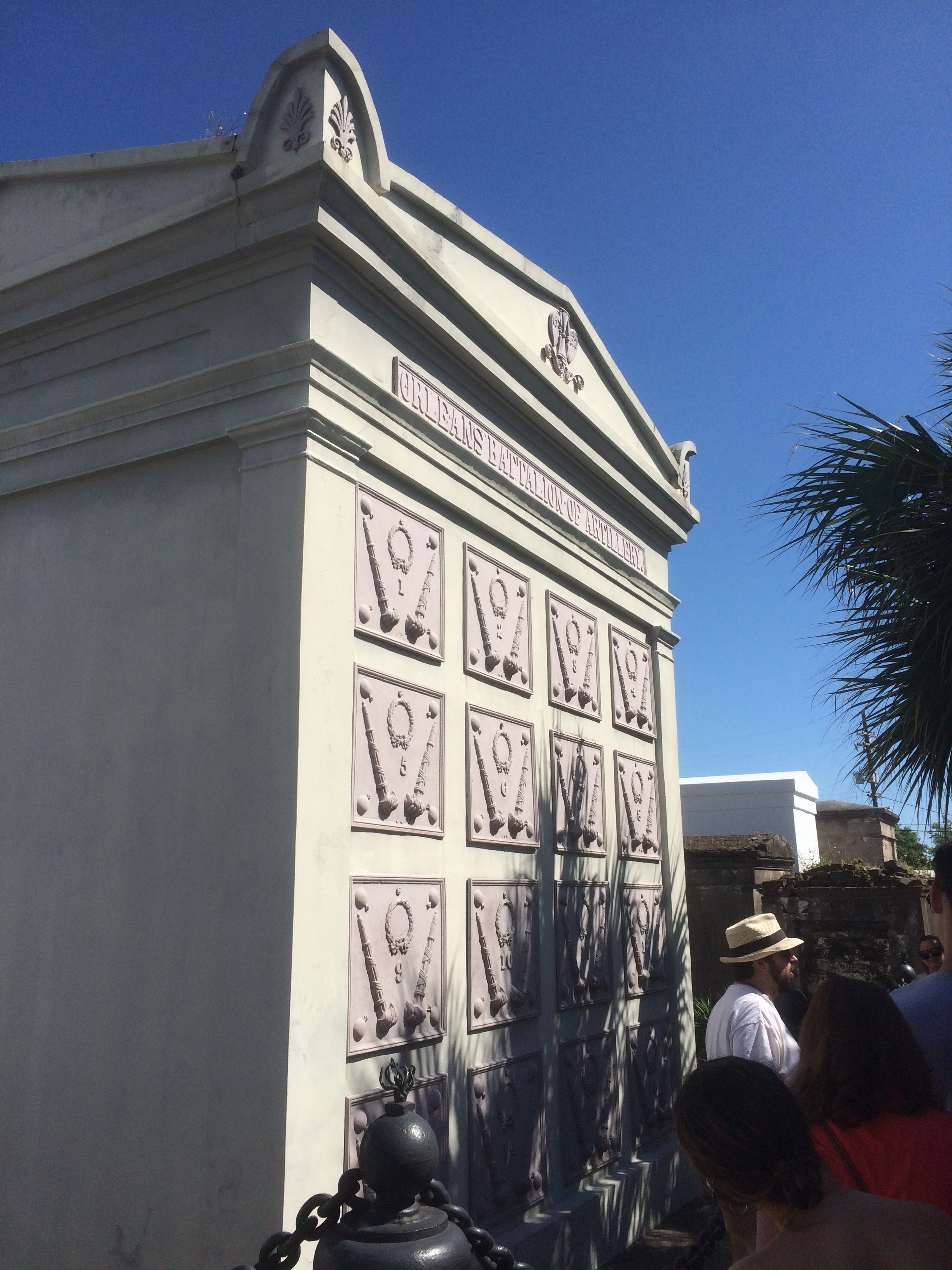Back again on Tuesday, after Memorial Day.
These days, you need to be part of an organized tour to legally visit Saint Louis Cemetery No. 1 in New Orleans, though considering that city’s reputation, I expect people still slip in. But I wanted to do things the official way, so on the morning of May 13, Lilly and I were part of a Free Tours on Foot tour of the historic cemetery. That’s a pay-what-you-will organization whose tours I first enjoyed in Charleston, SC.
Actually, not free in this case, even if you’re a wanker who doesn’t tip the guide at the end of the tour, since the Catholic Archdiocese of New Orleans, owner of the cemetery, demands a $2 fee per person paid upfront. Not that onerous, and I hope that it all goes to maintenance of the place. (Also, I tipped our guide, since I’m not going to be that wanker.)
New Orleans cemeteries famously sport above-ground tombs, a feature I long believed stemmed from the region’s high water table. That seems to be a common notion, repeated in guidebooks in an earlier time, and on many web sites more recently.
Our guide, an earnest young man and New Orleans history buff, told us otherwise.
What he said was pretty much in line with how an interesting web site called Interesting Thing of the Day explains it: “Tour guides seldom mention that above-ground burial was a common practice in both France and Spain, where many of the early settlers were from. Even without the resurfacing coffins — which, by the way, were the exception rather than the rule — this practice may well have been adopted simply to keep with tradition. In any case, this method is still widely used today, even though the water table has dropped considerably over the past two centuries as nearby marshes and swamps were drained.
“In New Orleans… bodies are usually placed inside the walls of the tombs. Because of the hot, subtropical climate, the tomb then effectively becomes an oven, and the high heat causes the body to decompose rapidly in a process that has been compared to a slow cremation. Within about a year, only bones are left.
“Just as an oven would not be constructed to bake a single loaf of bread, the tombs in New Orleans cemeteries are used again and again. The specifics vary depending on the exact design of the tomb, but a typical scenario is that after a year, the bones of the departed are swept into an opening in the floor of the tomb, which is then ready for its next occupant. It is a common practice to bury all the members of a family — or multiple families — in the same tomb, with names and dates added to a plaque or headstone as necessary.”
Overall, Saint Louis Cemetery No. 1 has the look and feel of a dense necropolis, with avenues of the dead running between the tombs.
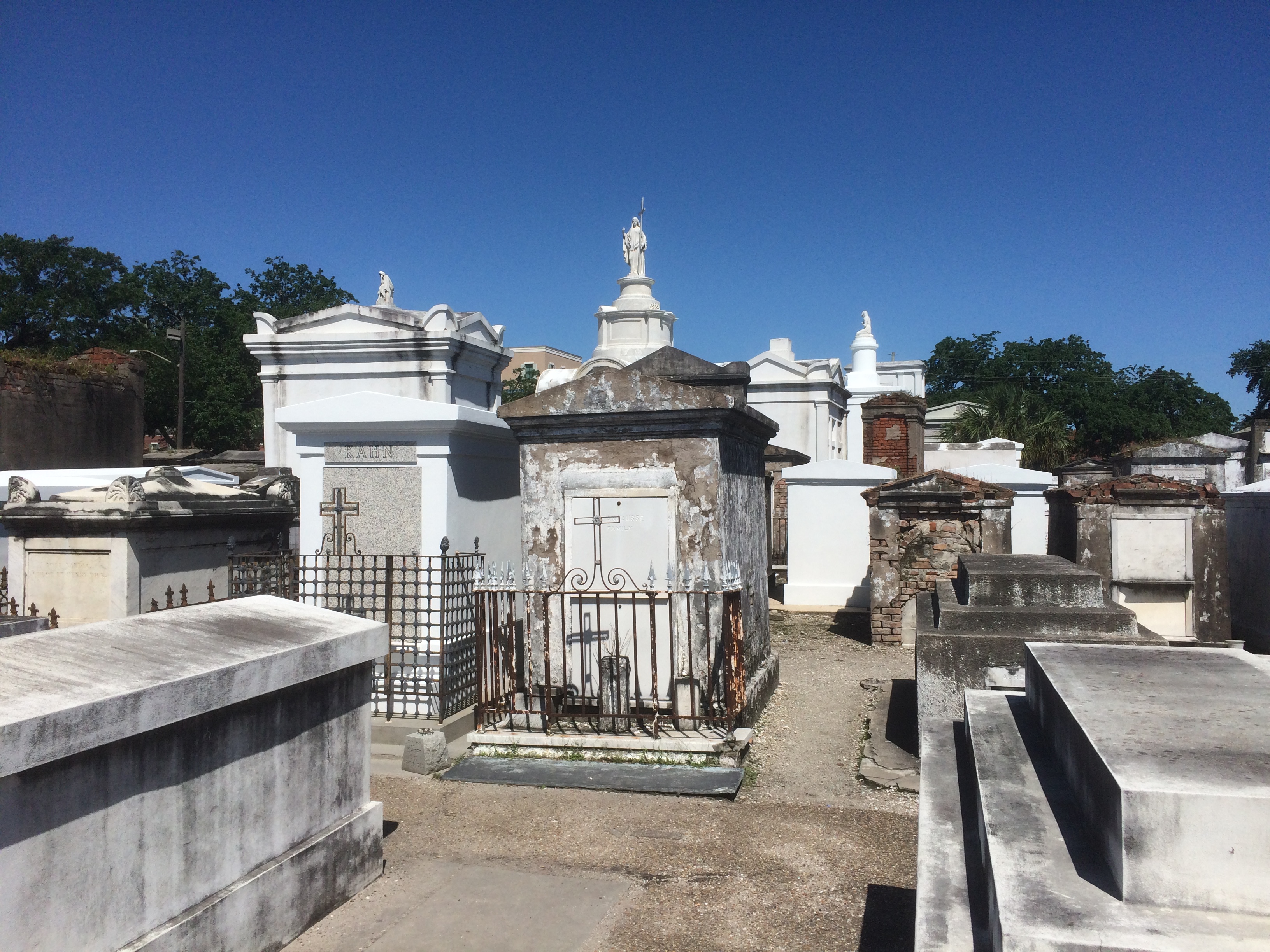
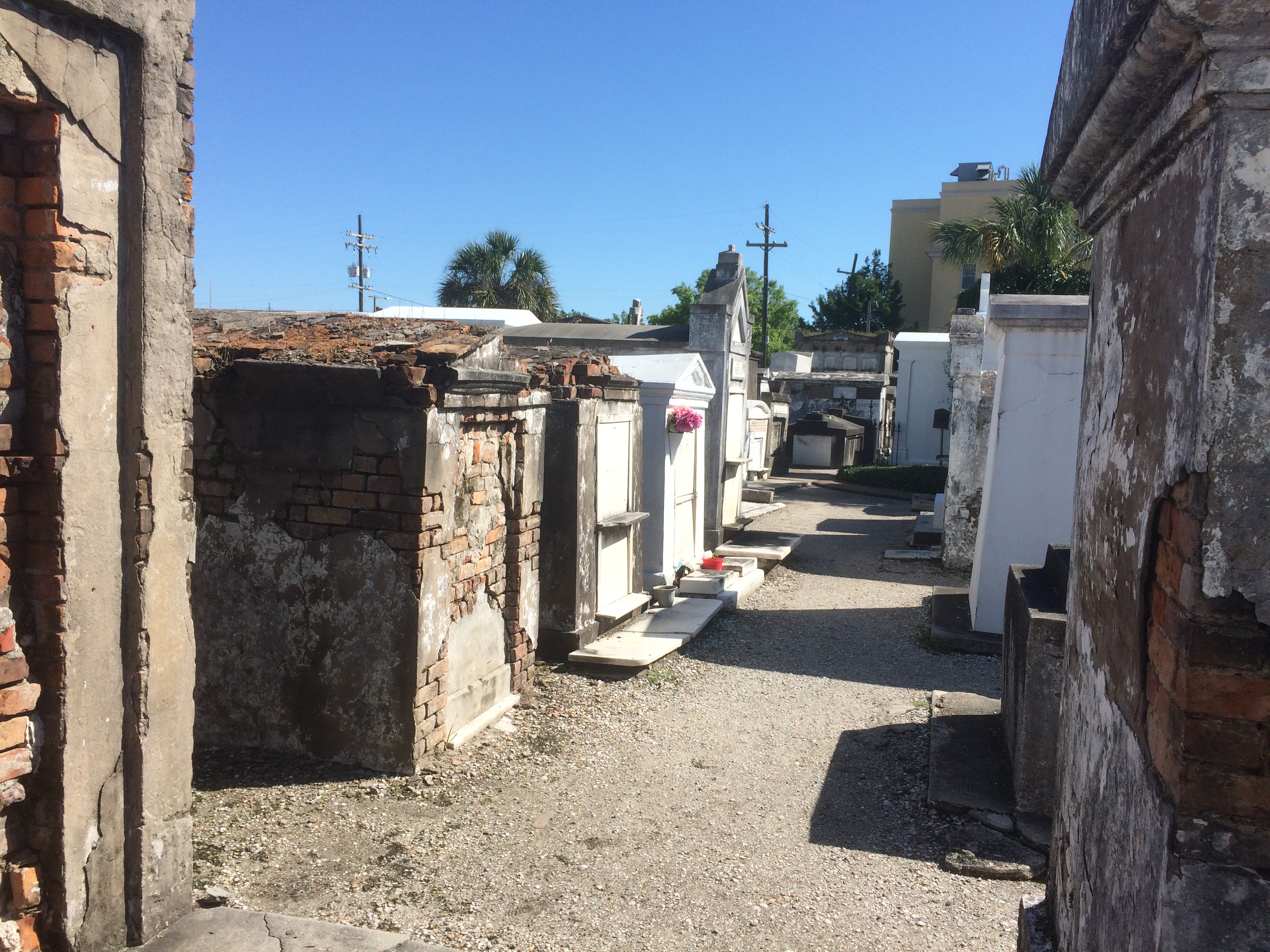
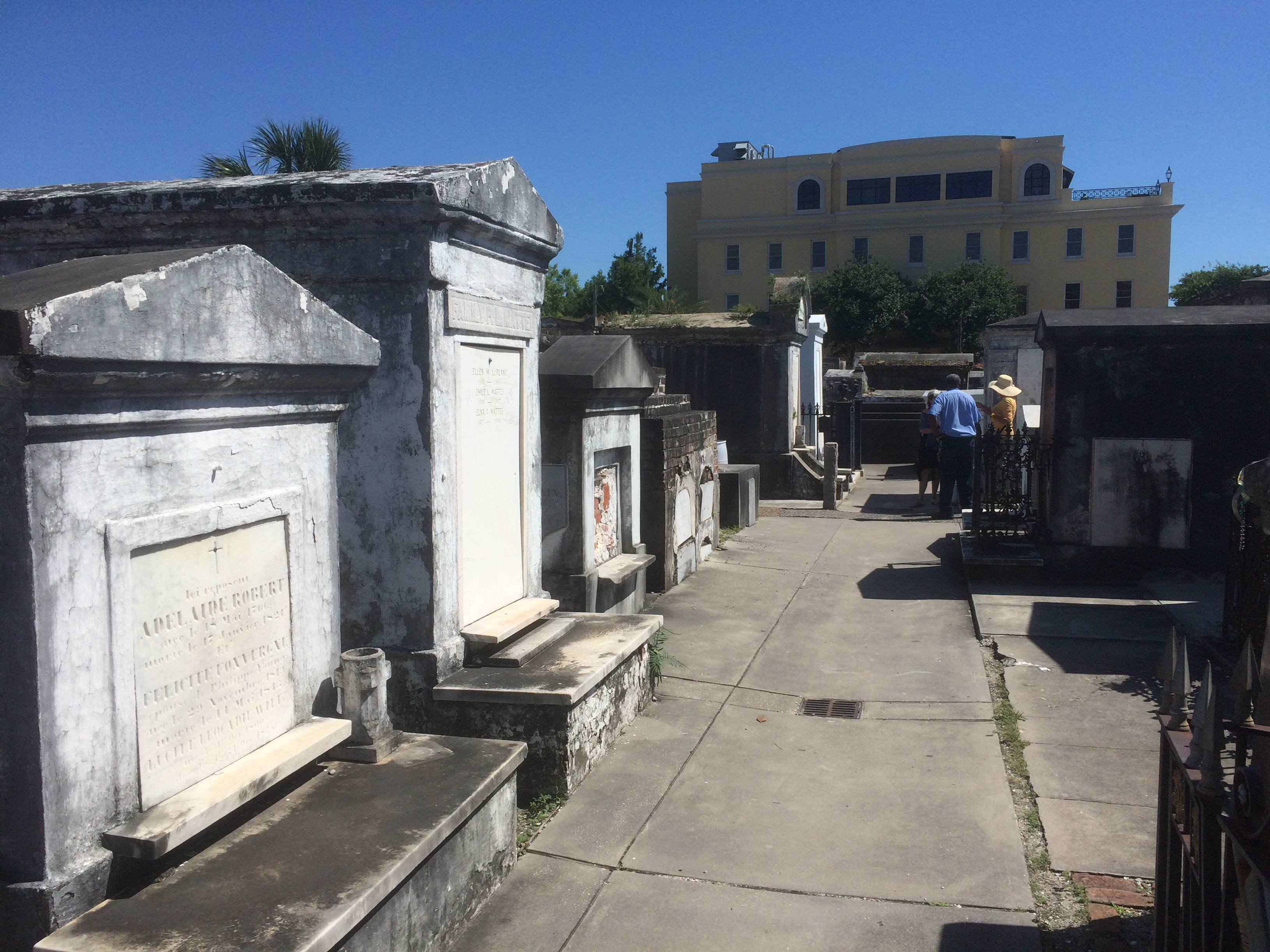 Some of the tombs — a good many — are well maintained. Others, not so much.
Some of the tombs — a good many — are well maintained. Others, not so much.
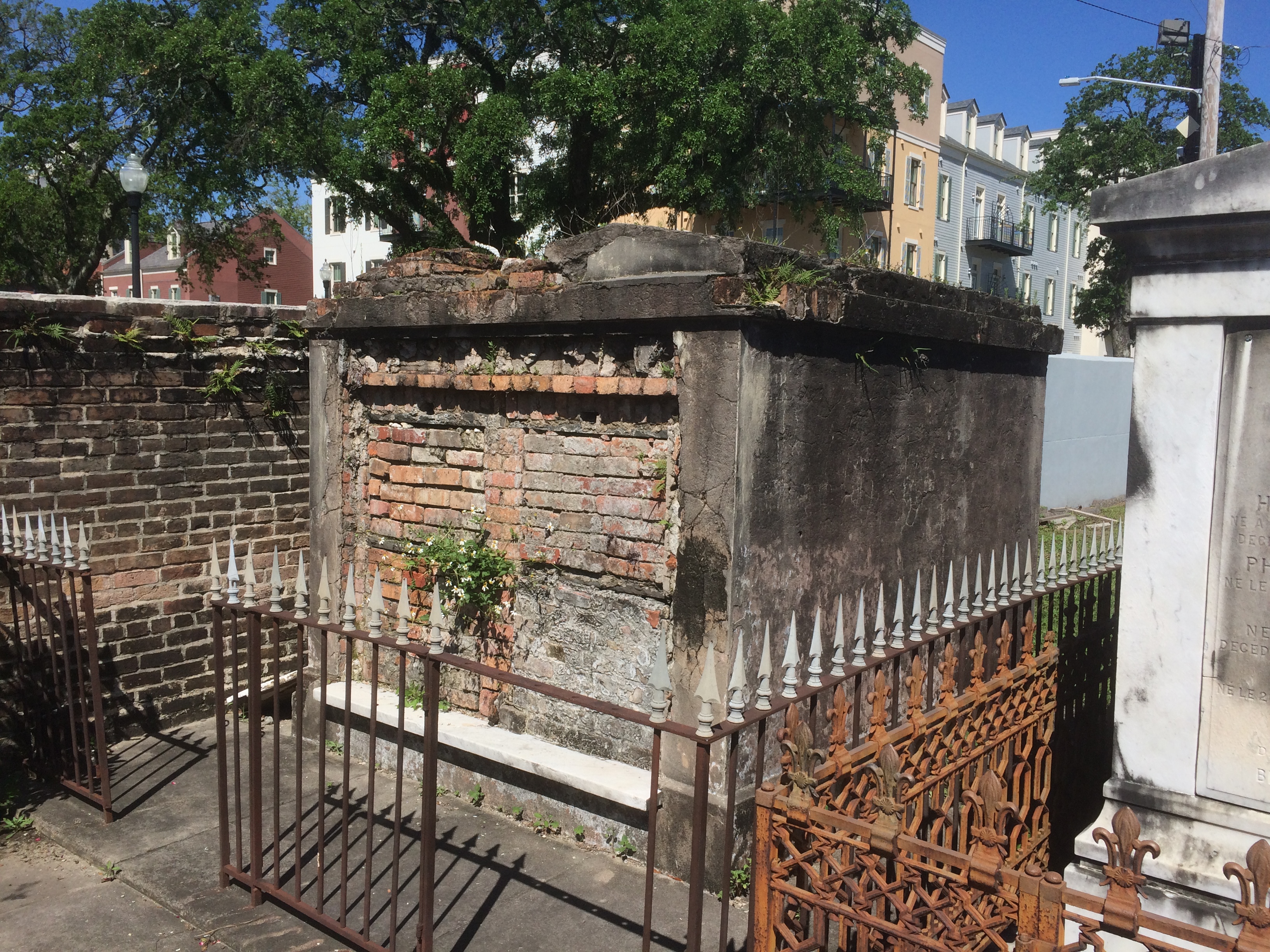
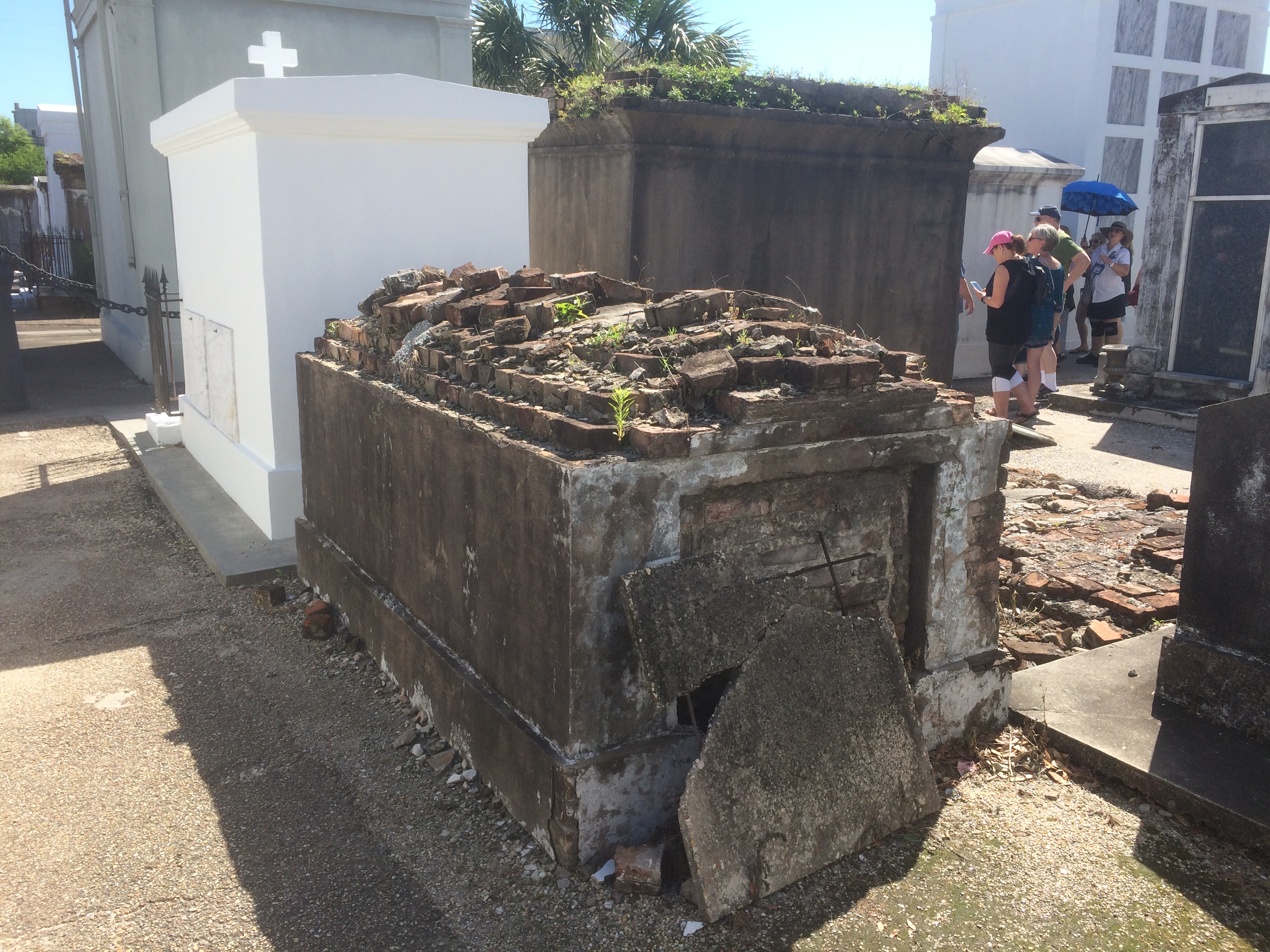
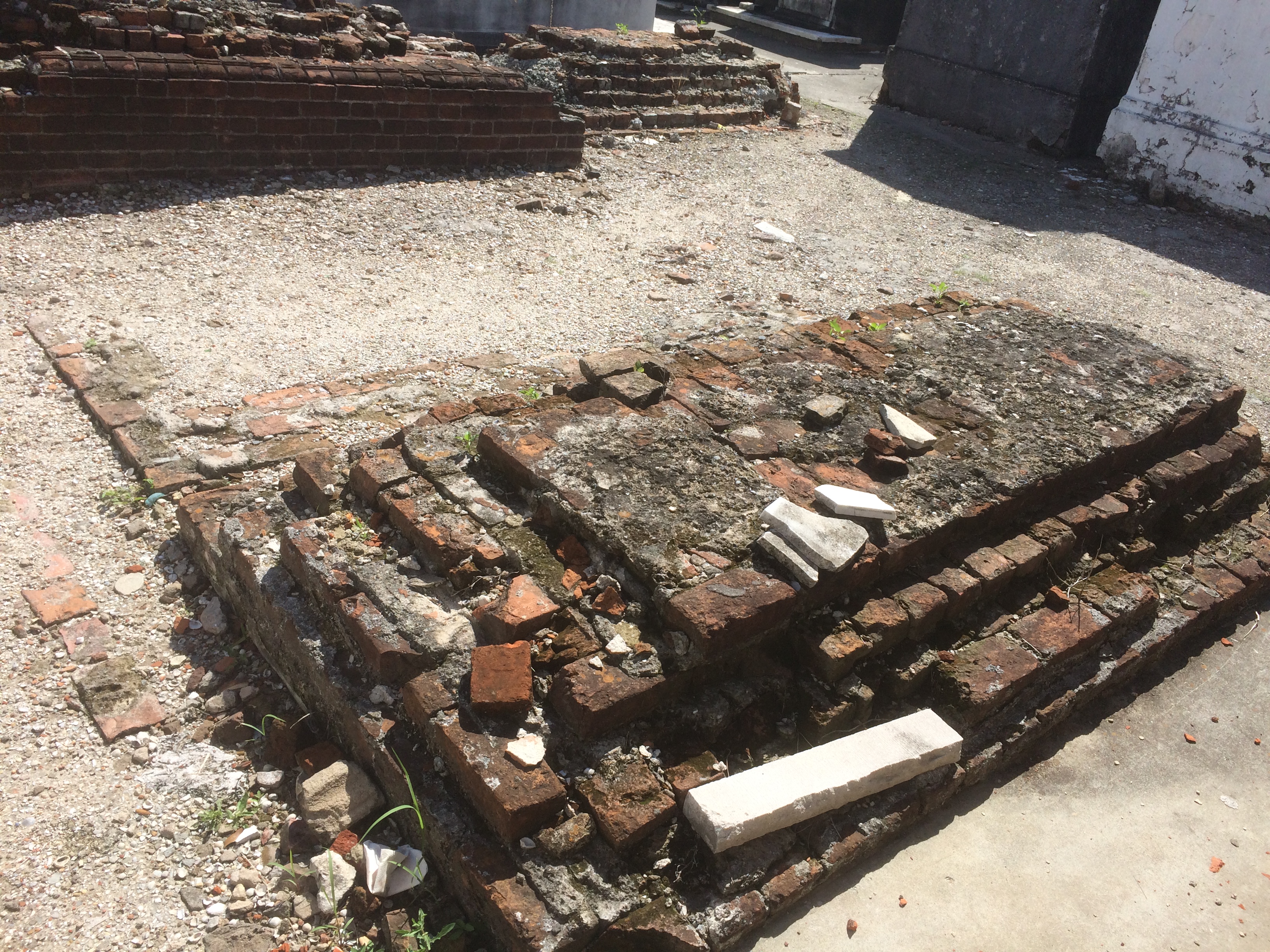 We saw a number of examples of tombs used by many occupants over the years, including those of mutual aid societies established in New Orleans in the 19th century. The most ornate of these is the New Orleans Italian Mutual Benevolent Society’s tomb.
We saw a number of examples of tombs used by many occupants over the years, including those of mutual aid societies established in New Orleans in the 19th century. The most ornate of these is the New Orleans Italian Mutual Benevolent Society’s tomb.
Architect Pietro Gualdi designed the tomb in the mid-1850s and went as far as inscribing his name on it. The tomb’s 24 vaults were for the temporary use of the society’s members, with its basement serving as an ossuary. The guide said that Gualdi died of one of the diseases that killed a lot of people in 19th-century New Orleans, maybe malaria, and was one of the first people interred in his creation (Wiki asserts malaria for sure).
Another collective tomb: the Orleans Battalion of Artillery.
Its plaque says:
Within this burial memorial rest some of the gallant defenders of New Orleans, members of the battalion which fought in honor on the plains of Chalmette on January 8, 1815 against the British invaders.
Date of construction is unknown.
Restored in 1974
Naturally the tour went by one of the cemetery’s odder tombs — that commissioned by actor Nicolas Cage, presumably to bake his mortal remains when the time comes.
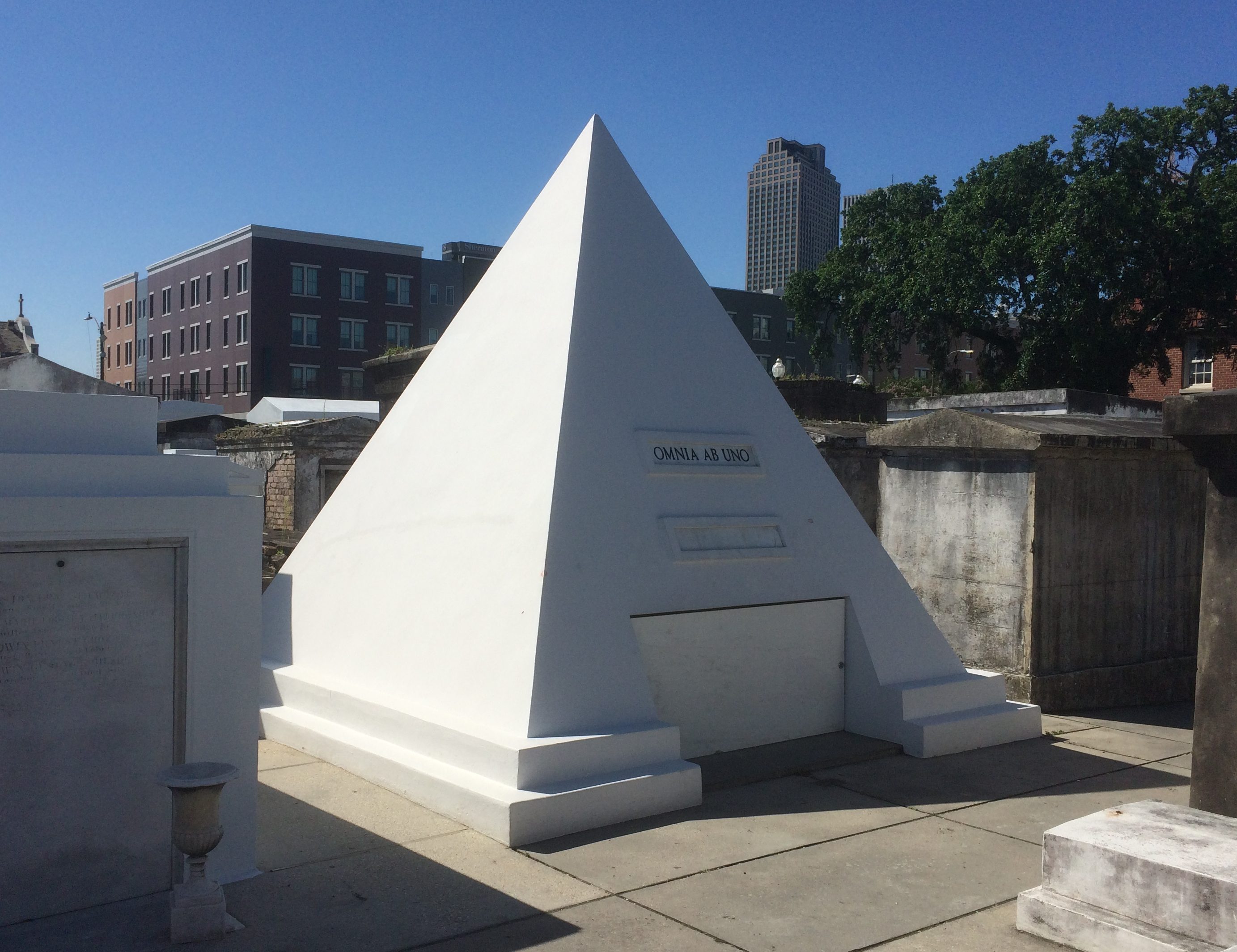 I’ve read he’s gotten a lot of flack for it. The tomb does look a little out of place, but then again, pyramids aren’t unknown in cemeteries — and why do all the tombs need to be rectangular? Also, the archdiocese clearly signed off on the thing, presumably persuaded by the actor’s payment of a generous fee.
I’ve read he’s gotten a lot of flack for it. The tomb does look a little out of place, but then again, pyramids aren’t unknown in cemeteries — and why do all the tombs need to be rectangular? Also, the archdiocese clearly signed off on the thing, presumably persuaded by the actor’s payment of a generous fee.
In a century, tours will probably pass by the pyramid, by that time stained and a little crumbled, and explain that an eccentric movie actor had it built for himself in the early 21st century. Maybe the guide will have to explain what a movie was. And say that the actor supposedly believed in the power of voodoo to revive him, and in fact practiced voodoo himself.
I made that last part up as an example of a story someone might tell in the future. After all, such stories occasionally cling to someone long after their death. Take the example of Marie Laveau, the Voodoo Queen, whose tomb the tour visited last (she’s there with a number of other people, per cemetery custom).
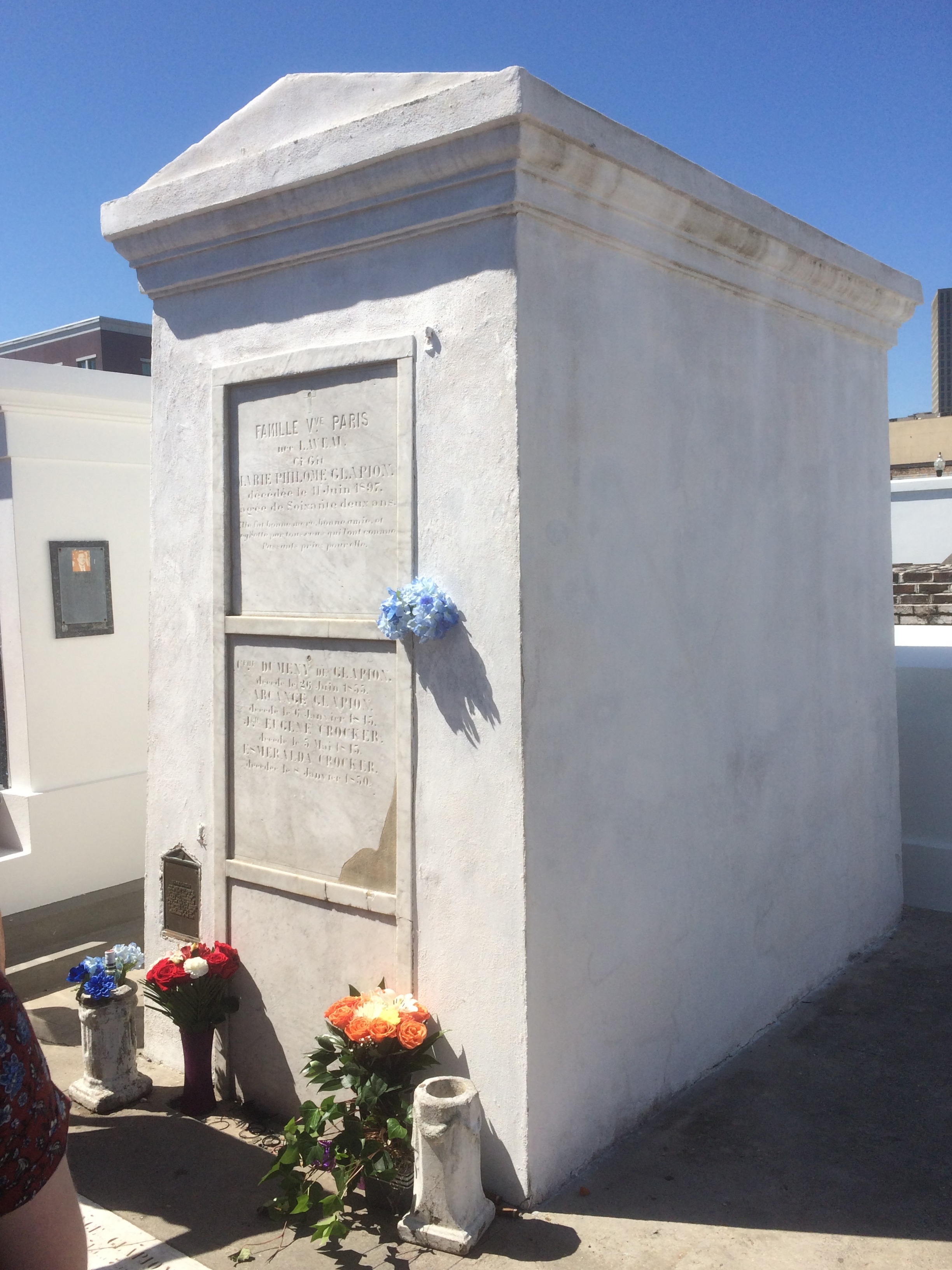 Roadside America: “Marie Laveau ran a New Orleans hairdressing salon during the day, but on her off-hours she was (supposedly) the Voodoo Queen, sought after for her potions and charms that would bring love or money to those willing to pay the price.
Roadside America: “Marie Laveau ran a New Orleans hairdressing salon during the day, but on her off-hours she was (supposedly) the Voodoo Queen, sought after for her potions and charms that would bring love or money to those willing to pay the price.
“Laveau died in 1881, but a tradition later developed that she could still grant favors from beyond the grave if believers either left offerings or scrawled three Xs on her tomb. This resulted in what was clearly the messiest grave in the U.S., and caused no end of headaches for local preservationists, who had to constantly clean and repair the tomb only to have it trashed again.
“They finally had enough and, on March 1, 2015, the cemetery was declared off-limits to all tourists except tour groups led by licensed tour guides.”
Marie Laveau’s grave is clean white these days, though if you look closely enough, you can see traces of those Xs drawn on the stone. As for Mme. Laveau’s skills in the voodoo arts, the guide suggested we take those stories with grains of salt. I will. New Orleans seems to have more than her share of such stories, yet we love her for it.
Usually members of a tour like this don’t have that many questions, but one young woman — college age, I think, on the tour with her mother — peppered the guide with an unusual number of questions that betrayed a strong interest in cemeteries and funerary practices.
The tour wound down at the Basin St. Station, a redevelopment between the cemetery and Louis Armstrong Park that has a New Orleans visitors center, exhibits and event space. A few of us stayed there to speak with the guide a little longer, and he and I and the young cemetery enthusiast started comparing notes about cemeteries worth visiting. I suggested Green-Wood in Brooklyn and Woodland in Dayton, though of course I can never remember its name. One suggestion of his — or hers — was Akaroa Cemetery in New Zealand, which I have to say does look pretty cool.

